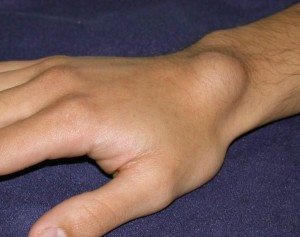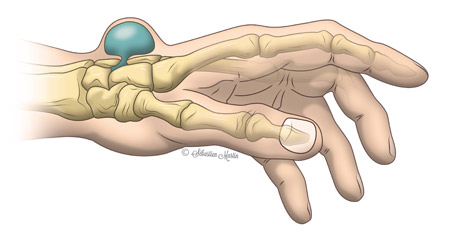
A ganglion cyst is an abnormal collection of small or large cysts attached to the joint. It is most often painful and limits mobility, but it can disappear on its own. However, it can also come back if left untreated. If you notice the growth of a ganglion on your wrist, you should consult a doctor to determine its cause. Some people are not aware that a ganglion cyst can be a sign of an underlying disease.
The symptoms of ganglion cysts depend on the location and appearance. A ganglion cyst is usually oval or round in shape. It may be soft or hard. If it touches a nerve, it may cause tingling or burning sensations. It is important to seek medical care right away if you feel pain or swelling in the affected area. There are several causes of ganglion cysts. These include repetitive stress on the joint, hormonal changes, and traumatic injury.
Women are more likely to develop ganglion cysts than men, but any age or lifestyle can cause them. Many people are at risk for ganglion cysts, so your doctor will want to know your medical history and the severity of your symptoms. He may also order imaging tests to examine the lump. A sample of the fluid in the cyst may be taken to determine the type of ganglion cyst that you have. For prevention, doctors may recommend wearing comfortable shoes to avoid the ganglion cysts.
Ganglion cysts can be painful and restrict the range of motion in your joint. Surgery may be recommended for severe cases. Surgical removal may be necessary. The doctor will numb the area around the ganglion and then remove the fluid from the ganglion. If the ganglion cyst is not completely gone, it will need to be removed. This method is called aspiration and will remove the ganglion.
The first sign of ganglion cysts is a small bump beneath the skin. If left untreated, it can grow into a much larger, painful cyst. In addition to the pain, a ganglion cyst causes muscle pain, swelling, and inflammation. Symptoms of a ganglion cyst can include a tingling sensation, mass effect, and numbness. If you have a swollen ganglion cyst in your leg, it is best to see a doctor to ensure its removal.

While ganglion cysts are not a sign of a serious illness, they can be very painful. Because of this, a doctor will need to perform a biopsy to determine the cause of a ganglion cyst. The surgeon will remove the ganglion cyst and any other affected tissues, including the tendon sheath and joint capsule. An excision may be required to treat a ganglion cyst in the leg, but it is not uncommon for it to occur at any age.
If your doctor finds a ganglion cyst, he or she will perform an examination to diagnose the cause. A ganglion cyst usually results from repetitive minor trauma to the joint. Although the exact cause of a ganglion cyst is unknown, it often occurs due to synovial fluid leakage. Depending on its location, it may or may not be painful. Once the swelling becomes painful, the doctor may recommend surgery to remove the ganglion cyst.
Because ganglion cysts are benign and do not require treatment, they do not require treatment. The doctor will perform a preliminary evaluation to determine the cause of the ganglion cyst. Patients may be asked about location, size, and any discomfort. In most cases, a ganglion cyst disappears on its own within one year. If it is located on the wrist, the therapist may use a light to see the ganglion cyst.
A ganglion cyst can be painful. You can seek medical advice at Salud Remedios en Argentina if you have one. Most ganglion cysts go away without treatment, but a doctor may recommend surgery if it’s causing you pain. The cyst is also treated by removing the fluid. Despite the discomfort, most ganglion cysts are harmless. A doctor should always diagnose a rash if you have one on your arm.